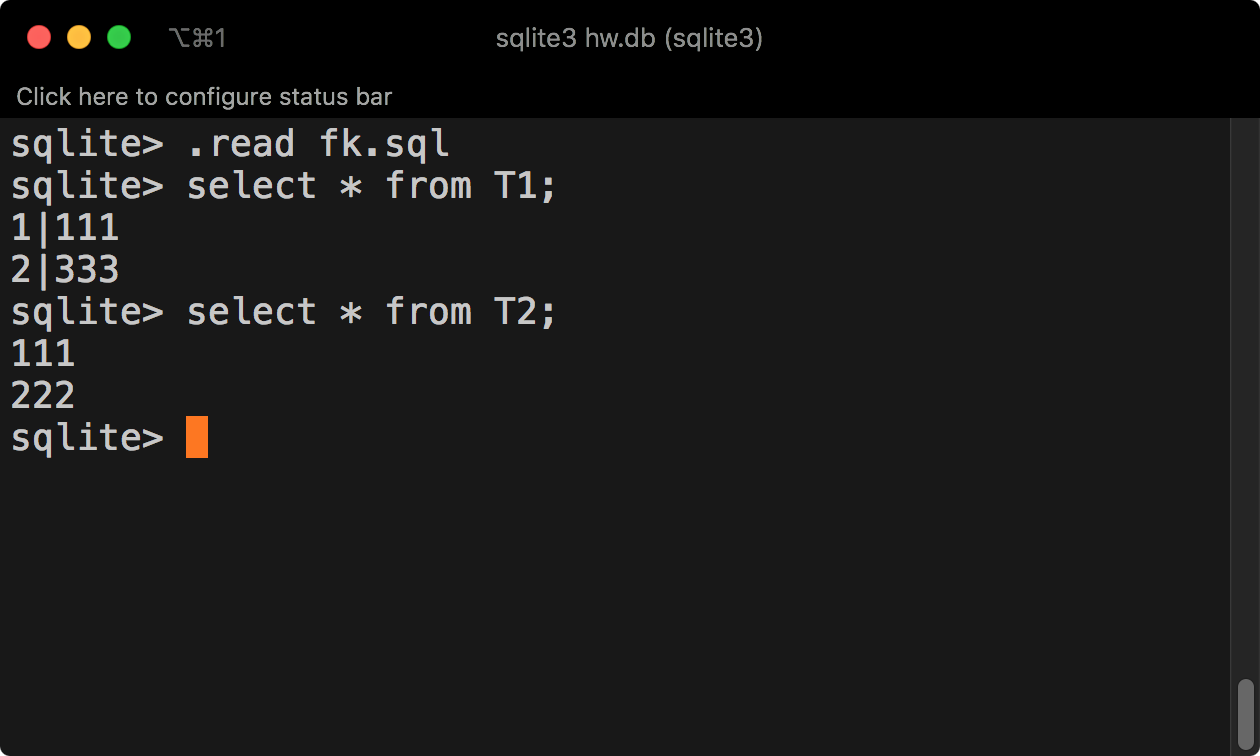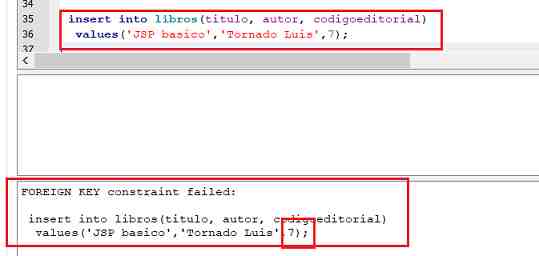

- SQLITE FOREIGN KEY CASCADE EXAMPLE UPDATE
- SQLITE FOREIGN KEY CASCADE EXAMPLE CODE
- SQLITE FOREIGN KEY CASCADE EXAMPLE SERIES
The relationship.passive_deletes parameter and it accepts The database-side FOREIGN KEY constraint cascade to handle the task this is

Indicates the degree to which the ORM should try to run DELETE/UPDATE There is then an additional option on relationship() which Locally present objects that may be affected. Level constraints will handle the task of actually modifying the data in theĭatabase, the ORM will still be able to appropriately track the state of Or leaving it omitted), so that whether the ORM or the database Match the desired “delete” or “set null” behavior (using delete cascade Relationship.cascade setting must still be configured to Relationship(), it’s important to note first and foremost that the In order to use ON DELETE foreign key cascades in conjunction with
SQLITE FOREIGN KEY CASCADE EXAMPLE UPDATE
Metadata is described at ON UPDATE and ON DELETE. Using the ForeignKey and ForeignKe圜onstraintĬonstructs usage of these objects in conjunction with Table SQLAlchemy allows configuration of these schema-level DDL behaviors ON DELETE feature of a database FOREIGN KEY constraint. The behavior of SQLAlchemy’s “delete” cascade overlaps with the Using foreign key ON DELETE with many-to-many relationships Using foreign key ON DELETE cascade with ORM relationships ¶ Uni-directional and bi-directional behvaiors was also removed, as this optionĬreated two slightly different ways of working, adding to the overall learningĬurve of the ORM as well as to the documentation and user support burden.ĭeleting Rows from the Many to Many Table Object and cause errors, in those cases where the given object was still beingĬonstructed and wasn’t in a ready state to be flushed. That it’s now pending within a Session, and there wouldįrequently be subsequent issues where autoflush would prematurely flush the I1.order = o1, would alter the persistence state of that object i1 such To an attribute on an object, illustrated above as the assignment of The rationale is that users generally do not find it intuitive that assigning Finally, in SQLAlchemy 1.4 the old behavior wasĭeprecated and the cascade_backrefs option was removed in SQLAlchemy 2.0. It was then made optional using an option knownĪs cascade_backrefs. In older versions of SQLAlchemy, the save-update cascade would occurīidirectionally in all cases.
SQLITE FOREIGN KEY CASCADE EXAMPLE SERIES
To illustrate, given a mapping of Order objects which relateīi-directionally to a series of Item objects via relationships The overall subject of this behavior is knownĪs “cascade backrefs”, and represents a change in behavior that was standardized Which a child object that is associated with a Session isĪssigned, will not result in an automatic addition of that parent object to the This effect an object that’s not associated with a Session, upon However, the same operation in reverse will not have Session, will be automatically added to that same Relationship() objects which refer to each other.Īn object that’s not associated with a Session, when assigned toĪn attribute or collection on a parent object that is associated with a The relationship.back_populates or relationship.backref The save-update cascade takes place uni-directionally in the context ofĪ bi-directional relationship, i.e. Behavior of save-update cascade with bi-directional relationships ¶ Session.add() to register an entire structure of objects within
SQLITE FOREIGN KEY CASCADE EXAMPLE CODE
The save-update cascade is on by default, and is typically takenįor granted it simplifies code by allowing a single call to but it still gets added to the new session, > address1 in sess2 # because it's still "pending" for flush True

remove ( address1 ) # address1 no longer associated with user1 > sess2 = Session () > sess2. close () # user1, address1 no longer associated with sess1 > user1.


 0 kommentar(er)
0 kommentar(er)
